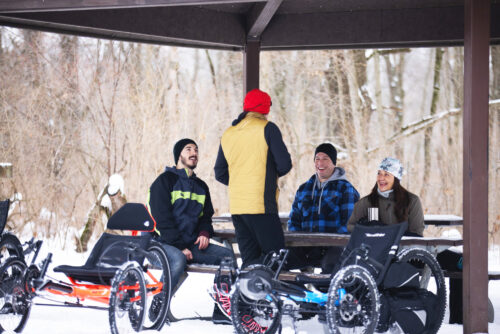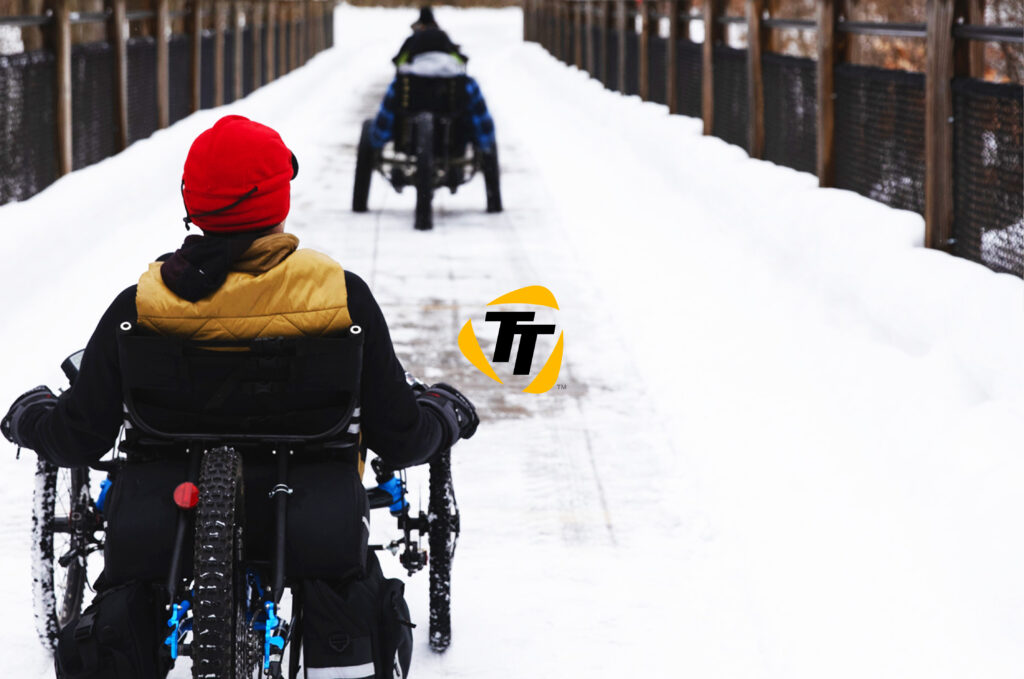
Dressing For Winter/Early Spring Trike Riding on Any Kind of Budget
March 4, 2022
If you’re like me, you’ve been itching to once again hit the trail after a long winter on the trainer. But perhaps seeing the outside temperature has kept you inside. Don’t let the season daunt you! There are lots of ways to prepare both yourself and your trike for an outdoor adventure, even with the cold still lingering.
First Things First: Fenders Make It Fun
Like me, have you ever finished a ride where your hands, head, and back were covered with dirty road spray? Fenders are the solution to that problem, and I’d be remiss to recommend riding in winter without them.
Those who ride only dry roads may never need fenders, but for the rest of us, they absolutely make the difference between fun winter rides and staying inside.
No matter what kind of riding clothes you choose, keeping hands and feet dry and warm is a top priority. While riding my trike I don’t take the same amount of spray on my feet as bike riders do, but the front wheels of an unmodified trike will direct a steady stream of spray onto our hands over wet roads.
To take care of my extremities, and my trike, fenders are a must for cold, wet roads. Not only do wet hands freeze in the cold, but salty road spray can wreak havoc on a trike’s metal parts.
TerraTrike’s 20” Deluxe Front Fender Set protects riders’ hands from spray off the front wheels (there’s also a 24” version for larger wheels). The TerraTrike 26” Deluxe Rear Fender keeps road spray off a rider’s back and head. Check with your local TerraTrike dealer to see if they’re in stock, and consider letting the dealer install them. It’s not an insurmountable DIY job, but it’s one where a little bit of experience goes a long way.
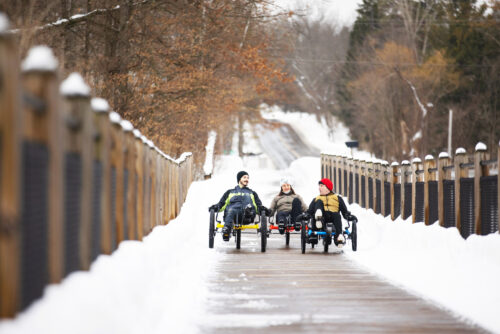
Top Winter Riding Gear
If price is no object and wintertime riding is a top priority, there are some serious solutions for keeping warm hands, even down to arctic temps. The Seirus HeatTouch Hellfire Glove just might be the best heated glove on the planet, and it’s the top pick of our staff, which has decades of experience riding through the winters of northern Michigan. Really all of the heated gloves by Seirus are worthy of inclusion in this category, but Hellfire is the pinnacle.
For stylish outerwear to maintain core temps, the Defend Fire Pant by Fox Racing is tough to beat. Pair with the Ranger Windbloc Fire Jacket and your choice of synthetic or merino base layers to match the temps, and you’ve got a breathable, insulated softshell system that’s comfortable well below freezing temperatures. And speaking of base layers, yes layering is a key to staying warm and dry, and Smartwool has been my go-to for this. Nothing beats a wool base layer for keeping you warm when wet. It’s naturally anti-microbial and its hollow core fibers wick the moisture away from the body, helping to keep the skin dry and warm.
For the feet, riders who prefer flat pedals should check out the Five Ten Trailcross GTX, the first flat-pedal specific cycling shoe with winter insulation and a Gore-Tex membrane. For clipless-pedal riders, 45 NRTH’s Wolfgar and Wolvhammer winter cycling boots have been favorites for a while now.
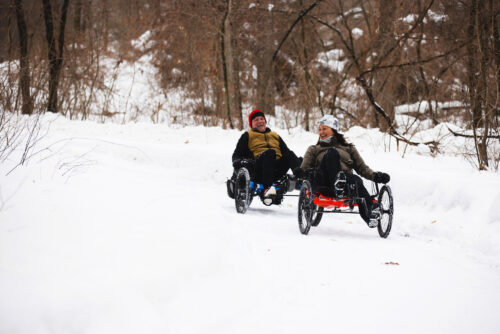
Budget Winter Triking Tricks
Maybe you’d rather plan a trip to somewhere warm than spend all your money on gear to ride in the snow. Maybe you’re prioritizing a mortgage or student loans … we get it. Here are a few pointers on how to make winter triking work on a budget.
Start with a decent base layer next to skin – an old set of polypropylene or wool long underwear is fine. With a decent base layer, you can get away with a lot when it comes to low-tech outerwear over top.
An old wool sweater makes an excellent midlayer. Lots of us have old sweaters with moth holes buried deep in our closets, and those who don’t can find them for next to nothing in thrift stores. As long as it’s wool, it will be reasonably warm, even when wet.
For over that sweater, try a light rain jacket or heavy windbreaker. It may not be as breathable or stylish as the current premium gear, but since you already have it, you won’t need to worry about diminishing returns on your investment in cold-weather riding gear.
Same goes for pants. Any kind of wind, rain or snow pant can do the trick, paired with the proper base layer. Use rubber bands to gather up the cuffs, keeping your hems from getting stuck in the chainring and the breeze from blowing up your legs.
As far as gloves go, you can get away with less if you’re keeping them dry with fenders. What works for one rider might not work for the next, but this much is certain: Any winter glove will perform better when paired with a fender to keep it dry. When all else fails, treat yourself and spend a few bucks on disposable hand warmers (these have been a life saver for me many times).
Finally, the feet. Penny-pinching cyclists (and myself growing up) have been using bread bags sandwiched between two pairs of thin wool socks to keep their feet warm and dry. With this bread bag trick, old pack boots or light hikers with water-resistant membranes work great. Your summertime clipless cycling shoes may not, however, as they are optimized for ventilation, which means lots of places for cold air and water to find their way in.
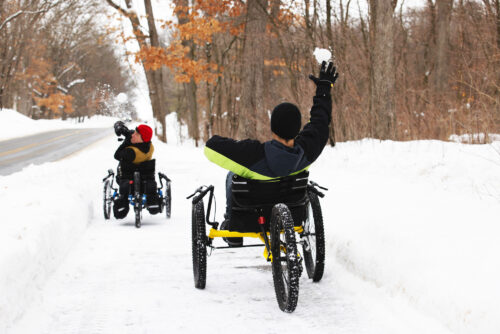
Get Out There!
I myself will be prepping for a trip on the White Pine trail this weekend, and will be using a lot of these tips to make sure my ride is a good one! If you plan to take your trike out this winter/spring, be sure to snap a picture and tag TerraTrike. Happy riding!
